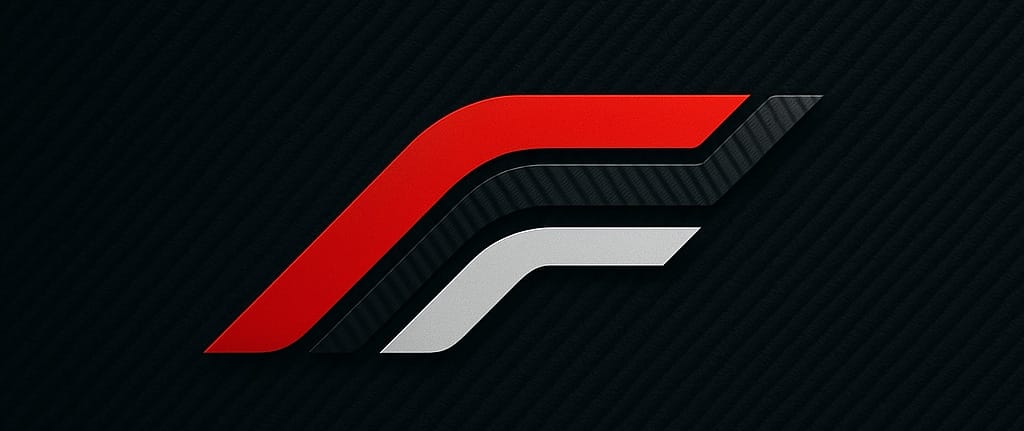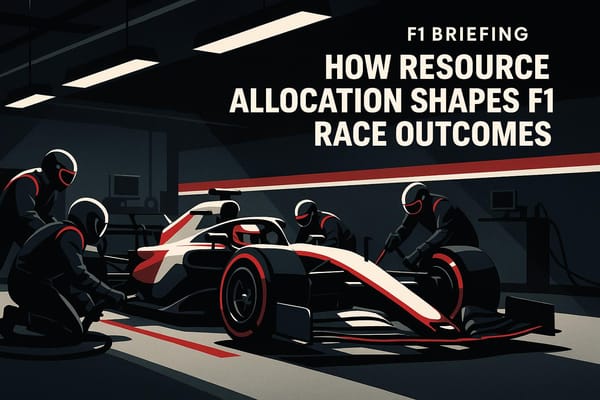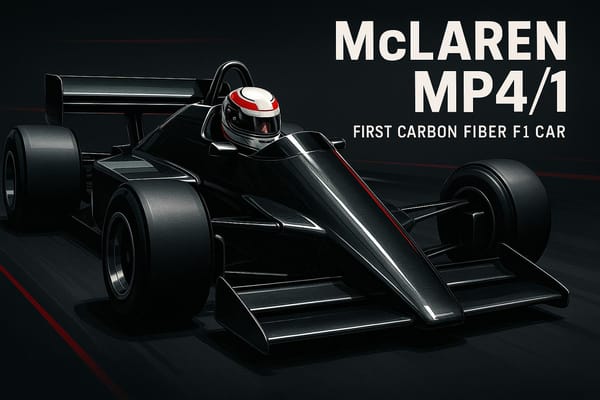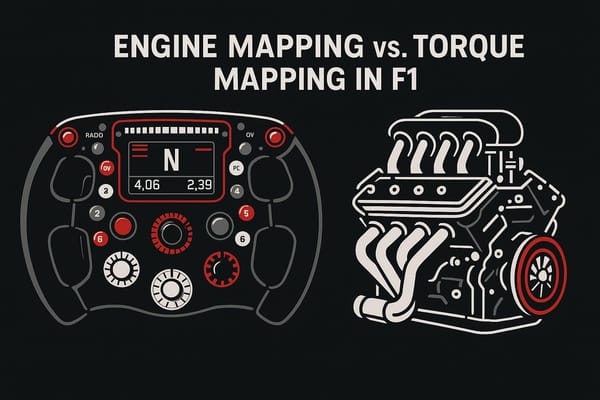How F1 Teams Use Driver Feedback in Car Design
Explore how F1 teams leverage driver feedback to enhance car design, balancing intuition with data-driven engineering for optimal performance.
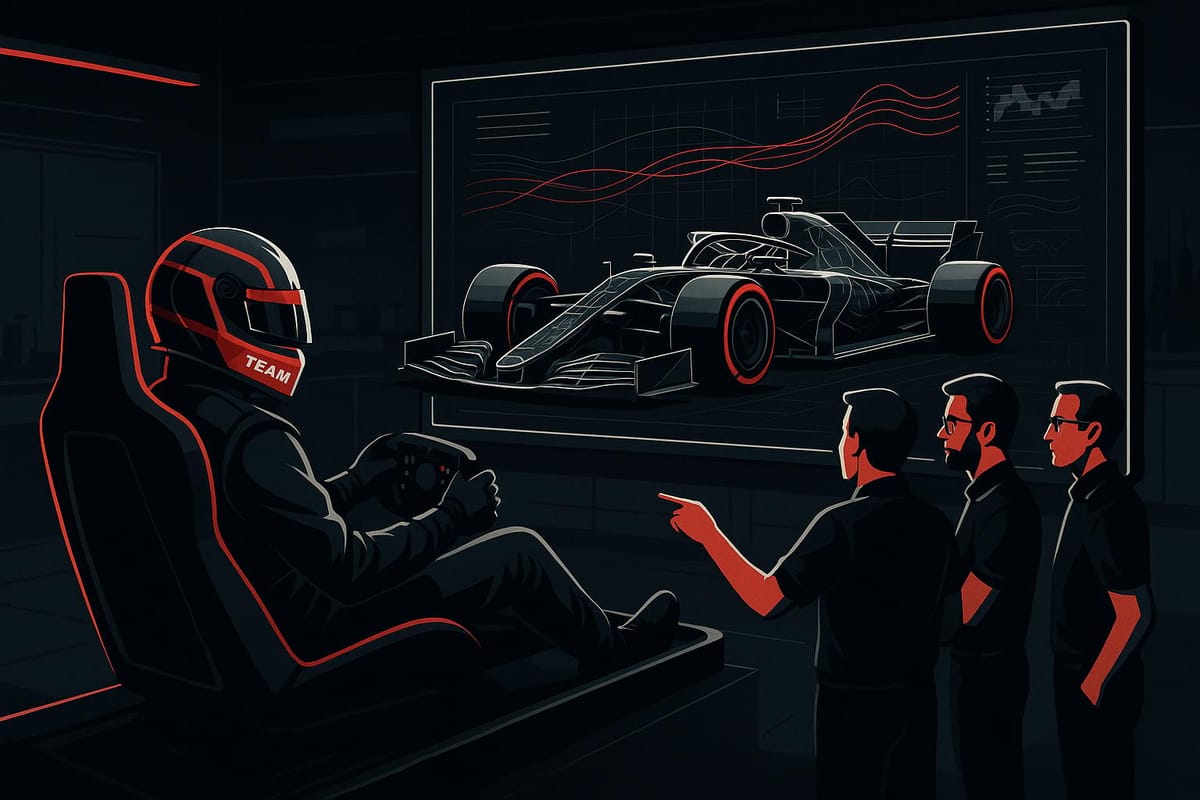
Driver feedback is crucial in F1 car design, turning on-track insights into engineering improvements. While sensors provide data, drivers explain how the car feels, helping teams refine performance. Here's how it works:
- Feedback Areas: Drivers focus on car balance, power delivery, braking, and stability.
- Collection Methods: Post-session debriefs, telemetry data, and simulators ensure precise feedback.
- Implementation: Feedback leads to setup tweaks (hours), component updates (days), or major redesigns (weeks).
- Challenges: Teams balance driver input with data and budget limits under F1's $135M cost cap.
This collaboration ensures cars are optimized for both driver comfort and race performance, blending human intuition with engineering precision.
Ep39. F1 Engineer Richard Frith On Suspension Setup & ...
Driver Feedback Collection Methods
F1 teams use a mix of traditional debriefing techniques and advanced data tools to gather and analyze driver feedback. This approach creates a constant flow of information between drivers and engineers, paving the way for precise design updates.
Post-Session Debriefs
After each session, structured debriefs bring drivers together with key technical staff to discuss performance details. These debriefs focus on:
- Corner-by-corner handling analysis
- Tire grip performance during stints
- Engine response under various settings
- Brake pedal feel and stopping power
Drivers provide feedback using standardized forms and rating scales, making it easier to track changes and compare different setup configurations over time.
Combining Data with Driver Input
Driver feedback is paired with telemetry data from more than 300 sensors, capturing details like:
- Real-time performance metrics
- High-speed camera footage for aerodynamic insights
- Tire temperature and pressure readings
- G-force measurements across multiple axes
Specialized software overlays driver comments with this telemetry data, helping teams identify any gaps between what the driver feels and what the data shows. This process ensures driver input is directly linked to actionable design adjustments.
Testing and Simulation Tools
Engineers rely on driver-in-loop simulators and full-scale cockpit models to test setup changes and ergonomic adjustments. These tools include:
- Motion platforms and high-definition visuals
- Force-feedback steering systems
- Real-time track surface simulations
Full-scale cockpit models also allow teams to refine ergonomics while ensuring compliance with F1 regulations. This step-by-step process ensures that any design changes are thoroughly tested before they influence race-day performance.
Main Areas of Driver Input
Teams rely on driver feedback in three main areas to fine-tune performance and design:
Aerodynamics and Handling
Drivers play a key role in shaping a car's aerodynamics. Their feedback on balance helps teams tweak wing settings and optimize airflow. Observations about how the car responds when entering corners or its overall stability guide engineers in adjusting aerodynamic features.
Suspension tuning also benefits from driver insights. Feedback on ride comfort, weight transfer, and cornering behavior helps engineers adapt the suspension setup to suit various track conditions.
Drivers also provide input on cockpit design, including control placement, seat adjustments, and display layouts. This feedback ensures the cockpit is not only functional but also supports performance and driver comfort over time.
From Driver Comments to Design Changes
Driver feedback directly shapes car modifications, with teams relying on data to validate technical feasibility and performance improvements.
Implementation Process
In 2024, Mercedes tackled Hamilton's rear instability by analyzing data from 127 channels. This led to a new diffuser design being developed in just 9 days.
The time required for implementation depends on the type of modification:
| Modification Type | Timeline | Example Result |
|---|---|---|
| Setup Adjustments | 2–4 hours | Williams' front wing angle adjustments |
| Component Tweaks | 3–5 days | Red Bull's Bahrain rear wing update |
| Major Redesigns | 3–6 weeks | Alpine's 2025 steering column redesign |
These examples highlight how teams translate driver feedback into measurable design upgrades. For instance, during 2024 testing, Max Verstappen's input, refined through 12 simulation iterations, influenced 87% of the RB20 floor design. Red Bull's use of digital twin technology cut physical prototyping costs by 40% while maintaining accuracy.
Such streamlined processes highlight how feedback methods are validated and compared.
Feedback Method Comparison
To refine their processes, teams evaluate the effectiveness of different feedback methods. Williams F1 found an 85% match between driver-reported handling issues and CFD (Computational Fluid Dynamics) predictions.
McLaren's TAPIR system, an AI-powered tool, analyzes biometric and telemetry data to predict driver comfort. This approach has shortened implementation cycles by 29%.
Ferrari employs a weighted scoring system, assigning 60% importance to telemetry-backed feedback and 40% to driver intuition. A minimum confidence score of 7/10 is required for design review consideration.
Under the $135 million cost cap, teams must prioritize changes carefully. Alpine uses an impact scoring system to evaluate proposals based on factors like performance improvement per dollar, complexity, and benefits across components. Only proposals scoring above 7.5/10 are approved, leading to 63% of driver requests being declined in 2024 despite their technical feasibility.
Common Feedback Problems
Data vs. Driver Opinion
Sometimes, drivers' feedback doesn't align with telemetry data. For example, a driver might report handling issues, but the data shows everything is performing as expected. In these cases, engineers dig deeper - analyzing additional data, retesting under similar conditions, and considering factors like track conditions or weather. The goal is to bridge the gap between what the driver feels and what the data says, which can be tricky but crucial for improving the car's design. These situations highlight how teams must carefully balance driver insights with data-driven decisions.
Rules and Budget Limits
Beyond data challenges, budget and regulations play a big role in shaping design decisions. Teams have to weigh the benefits of acting on driver feedback against the financial and technical restrictions set by the sport. This means every potential improvement is evaluated not just for performance gains but also for compliance with cost caps and technical rules. It's a constant juggling act to ensure changes are both effective and within limits.
Conclusion
Driver feedback plays a key role in shaping F1 car design, bridging the gap between a driver's instincts on the track and the precision of engineering. By using structured processes, teams can turn driver observations into measurable performance gains. As highlighted earlier, areas like aerodynamics and cockpit design are directly influenced by this input, impacting race outcomes.
Teams that skillfully combine driver input with data analysis often achieve better lap times and overall race results. While challenges remain in aligning raw data with subjective feedback, a methodical approach ensures steady progress in car development.
Collecting feedback systematically and analyzing it carefully leads to user-focused design improvements. This approach is central to the ongoing advancement of F1 car performance.
FAQs
How do F1 teams handle situations where driver feedback and telemetry data don't match?
In Formula 1, balancing driver feedback with telemetry data is a critical part of car development. When feedback from the driver doesn't align with the telemetry, teams work closely with both the driver and engineers to identify the root cause. Driver feedback provides valuable subjective insights into how the car feels on the track, while telemetry data offers objective measurements of performance, such as speed, tire grip, and suspension behavior.
If discrepancies arise, teams analyze the data in detail, often running simulations or conducting additional tests to validate the feedback. The goal is to ensure that both the driver's instincts and the technical data are accounted for, leading to a car setup that maximizes performance and driver confidence.
How does the $135 million cost cap impact the use of driver feedback in F1 car design?
The $135 million cost cap in Formula One plays a significant role in how teams implement driver feedback during car development. With limited budgets, teams must prioritize changes that provide the most performance gains, making driver feedback critical in identifying areas that need improvement, such as aerodynamics, suspension, or cockpit ergonomics.
This financial constraint encourages teams to focus on efficiency and innovation, ensuring that every adjustment based on driver input delivers measurable results on the track. By aligning driver insights with data-driven decisions, teams can maximize performance while staying within budget limits.
How do F1 teams use driver feedback to improve car design?
Formula One teams rely heavily on driver feedback to fine-tune and improve their car designs. Drivers provide detailed insights on how the car behaves during testing and races, focusing on areas like aerodynamics, suspension performance, and cockpit ergonomics. This feedback helps engineers identify specific issues, such as instability in corners or discomfort in the seating position.
Teams prioritize feedback based on its impact on performance and safety. For example, if a driver reports difficulty maintaining control at high speeds due to aerodynamic instability, that issue is likely to take precedence. Collaboration between drivers, engineers, and simulation data ensures that design changes address both the driver's concerns and the team's performance goals.
